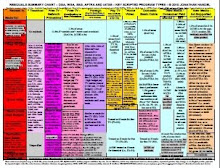About 60 pilots for scripted network primetime programs will be shot under AFTRA contracts this year, while few – or perhaps none – will be produced under SAG jurisdiction, according to sources close to the two unions, who spoke on condition of anonymity. This continues a trend that began last year, when roughly 90% of pilots (and 83% of pilot pickups) went AFTRA.
Those numbers, in turn, were a stunning reversal from previous years, which had had SAG garnering about 90% of pilots and 86% of pickups in 2008. But to see such figures two years in a row raises a fundamental question: Is SAG fading out of the TV business?
Maybe so. The ill-will generated by SAG hardliners evidently lives on in the producing community, notwithstanding the electoral change that brought cooler heads last year to the elected and top appointed leadership of the guild. The stalemate and strike rumblings that ensued after the June 30, 2008 expiration of SAG’s contract led many television producers to choose AFTRA jurisdiction wherever possible. SAG finally ratified a new agreement almost a year after the previous contract’s expiration, but the damage to the guild was done.
Also driving the change is the migration of television production from film to digital video: a filmed TV show can essentially only be shot under a SAG contract, but a digital video TV show in most cases can be produced under either union’s jurisdiction. It appears that TV producers are overwhelmingly choosing AFTRA — even though AFTRA wage rates (minimums) are several percent higher than SAG’s.
So, AFTRA’s reach is growing in network primetime scripted programming. That’s only part of the story though. Much of television is non-scripted, non-network or non-primetime: news programs, talk shows, reality, daytime dramas (soap operas), game shows, and more. Those areas, other than scripted cable, are AFTRA’s alone (or are non-union), as AFTRA indicated last summer in a compelling “24-hour TV union” graphic.
This year’s pilot season still has several weeks to go, so the numbers could change slightly, but probably not by much. Last year, for example, as of March 11, there were 70 pilots set for production, whereas the figure for this year as of today is about 60. If the pattern holds, we may see SAG increasingly focused on motion pictures and AFTRA on TV. The transition will be somewhat slow, because existing network primetime scripted series are heavily SAG, but the transition appears to be happening nonetheless.
And what of new media? Those productions tend to resemble TV series more than theatrical motion pictures – i.e., they’re episodic, the budgets are low, they’re shot on digital video, and are viewed on home screens – so AFTRA may end up with the lion’s share of these as well, to the extent that the work is done under union jurisdiction at all.
It’s a murky and confused picture that once again underscores the importance of joint bargaining by the two unions and, ultimately, the likelihood that merger is only solution to the present crazy-quilt jurisdictional overlaps between the two unions.
Spokespeople for SAG and AFTRA had no comment.
———————
Subscribe to my blog (jhandel.com) for more about entertainment law and digital media law. Go to the blog itself to subscribe via RSS or email. Or, follow me on Twitter, friend me on Facebook, or subscribe to my Huffington Post articles. If you work in tech, check out my book How to Write LOIs and Term Sheets.

